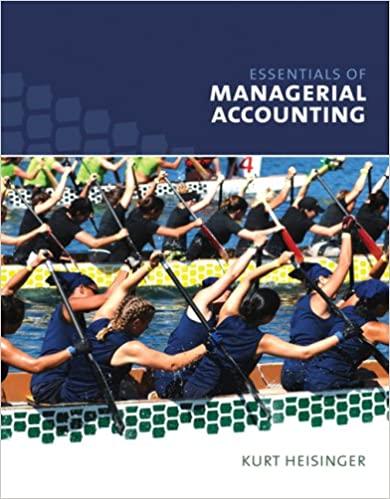Question:
The production budget for Kaminski Products shows the company expects to produce 500 units in the first quarter and 600 units in the second quarter. Each unit requires 10 pounds of direct materials at a cost of $2 per pound. The company prefers to maintain raw materials inventory equal to 20 percent of next quarter’s materials needed in production. Prepare a direct materials purchases budget using Exhibit 9.3 as a guide.
Exhibit 9.3

Transcribed Image Text:
Direct Materials Purchases Budget for Jerry's Ice Cream Jerry's Ice Cream Direct Materials Purchases Budget Year Ending December 31 Units to be produced (Exhibit 9.2) Materials required per unit (pounds) Materials needed in production Add desired ending inventory* Materials needed in inventory Deduct beginning inventory** Direct materials to be purchased (pounds) Cost of materials per pound Cost of materials to be purchased Direct materials cost per unit+ Quarter 1 2 3 4 Year 40,800 49,200 59,200 X 2 X 2 X 2 81,600 98,400 118,400 51,200 X 2 102,400 200,400 X 2 400,800 19,680 23,680 20,480 20,000 20,000 101,280 122,080 138,880 122,400 420,800 (16,320) (19,680) (23,680) (20,480) (16,320) 84,960 102,400 115,200 101,920 404,480 X $1 $84,960 X $1 $102,400 X $1 $115,200 X $1 $101,920 X $1 $404,480 $2.00 *Desired ending inventory = 20% X next quarter production needs; for the first quarter, 19,680 = 0.20 x 98,400. Fourth quarter desired ending inventory of 20,000 pounds is based on an estimate of materials needed in production first quarter of next year. **Beginning inventory = inventory at end of previous quarter; for example, second quarter beginning inventory = first quarter ending inventory. +$2 direct materials cost per unit = 2 pounds of materials required per unit X $1 per pound.








